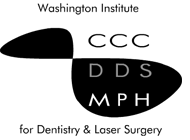|
||||
Dental Technology
 New Technology in the Dental Office
New Technology in the Dental Office
New Technology in the Dental Office
Dentistry has come a long way in making patient checkups more comfortable. With today's technology, dentists are better equipped to detect and treat tooth decay and perform other procedures with maximum comfort. You might find that your dentist has added some of the relatively newer technologies during your next visit.
What if my dentist does not have this equipment?
Dentists keep their eye on new technologies as they are introduced to ensure that they are safe and beneficial for patient use. As members in the Academy of General Dentistry (AGD), general dentists read clinical studies to determine the efficacy of a product prior to purchasing new equipment.
Air abrasion
Air abrasion is a procedure used to remove small areas of decay or to prepare a tooth for the placement of restorations or sealants. This procedure uses an air compression device to deliver, under pressure, tiny particles of aluminum oxide onto the surface of a tooth structure to blast away decay. This is similar to sandblasting a building in order to clean it.
With air abrasion, discomfort is minimized and many patients do not need any anesthesia. Children and adults who are fearful of needles, noise or the vibration of a regular dental handpiece may prefer this option if it is available. Air abrasion cannot be used as an alternative for every procedure.
Intraoral cameras
First developed in 1987, the intraoral camera is a wand-like device that projects a magnified picture from a patient's mouth onto a screen. The image allows both the dentist and patient to see fractured teeth, receding gums, and broken restorations, such as fillings.
After these pictures are taken, dentists are better able to diagnose and recommend treatment for their patients. The pictures also can provide documentation for insurance companies.
Digital radiography
Similar to traditional X-ray systems, digital radiography allows dentists to detect decay, bone loss and help with root canals. To take a digital X-ray, dentists will place a sensor on the tooth that looks like a piece of film. The process is a little faster than a traditional X-ray system, so patients' exposure to radiation is decreased.
Once the picture is taken, dentists can adjust the contrast and brightness to optimize diagnosis and find even the smallest areas of decay. Another benefit of digital radiography is the elimination of chemicals to process the film. The time to develop photos is reduced and can eliminate treatment disruptions.
Lasers
As scientific studies are confirmed, lasers may be a good alternative to the traditional drill, as anesthetic is not needed as often. Lasers are more precise and can reduce symptoms and healing times associated with traditional therapies. Currently, your dentist may use lasers for tooth whitening, periodontal (gum) disease therapy and removal of tooth decay. Laser therapy cannot be used as an alternative for every procedure.

Original content of this reprinted with permission of the Academy of General Dentistry. © Copyright 2007-2009 by the Academy of General Dentistry. All rights reserved. Read the original article here.







